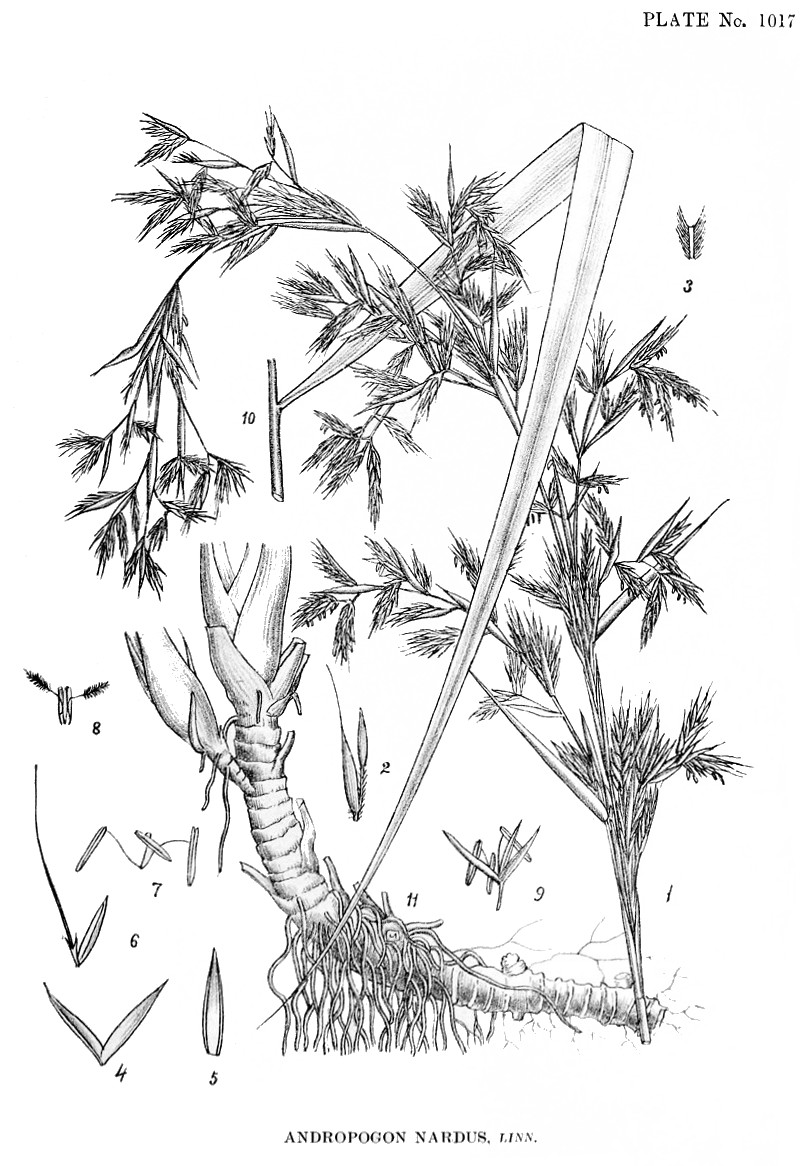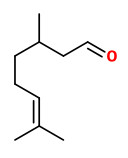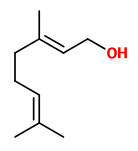Benutzer-Werkzeuge
Cymbopogon nardus (L.) Rendle in Hiern - syn. Andropogon nardus L. - Poaceae - citronella grass, Citronella Gras
Perennial, native to South India and Sri Lanka, introduced elsewhere and commonly cultivated as a crop plant.
Essential oil extracted from the aerial parts is the source of the commercial „citronella oil“ which is used as an insect repellent. http://www.floridata.com/ref/c/cymb_nar.cfm
Cympogon nardus is the source of Sri Lanka-type citronella oil, owning a warm, floral, woody odor with a rose nuance and a fresh topnote of citronellal. Main constituents of the essential oil are citronellal (5%), geraniol (20%), citronellol and geranyl acetate (14%), citronellyl acetate (3%), and limonene (9%).
It is „…more pleasant than the Java type. useful in fresh, floral compounds for all purposes.“
[Boelens, Mans H. „Sensory and chemical evaluation of tropical grass oils.“ Perfumer & flavorist 19.2 (1994): 29-45]
„The steam-distilled volatile oil obtained from partially dried grass (citronella grass) Cymbopogon nardus (Linn.) Rendle (Syn. Andropogon nardus Linn.), cultivated in the Nilgiri Hills at Ooty, India, was analysed by capillary GC and GC–MS. The partially dried grass contained 35 components, of which 29 constituents, comprising 92.7% of the oil, were completely identified. The oil contains 16 monoterpenes (79.8%), nine sesquiterpenes (11.5%) and four non-terpenic compounds (1.4%). The prominent monoterpenes were citronellal (29.7%), geraniol (24.2%), γ-terpineol (9.2%) and cis-sabinene hydrate (3.8%). The predominant sesquiterpenes were (E)-nerolidol (4.8%), β-caryophyllene (2.2%) and germacren-4-ol (1.5%).“
[Volatile constituents of Cymbopogon nardus (Linn.) Rendle., Mahalwal, V.S., Ali, M., Flavour and fragrance journal, Vol.18(1), 2003, 73-76]
„Major constituents of the oil were geraniol (35.7% of total volatiles), trans-citral ([geranial] 22.7%), cis-citral ([neral] 14.2%), geranyl acetate (9.7%), citronellal (5.8%) and citronellol (4.6%). The antifungal assay using the vapor-agar contact method showed that the crude essential oil markedly suppressed the growth of several species of Aspergillus, Penicillium and Eurotium at a dose of 250 mg/L in air. The most active compounds among the 16 examined volatiles, consisting of 6 major constituents of the essential oil and 10 other related monoterpenes were citronellal and linalool. Citronellal and linalool completely inhibited the growth of all tested fungal strains at a dose of 112 mg/L. Their minimum inhibitory doses ranged from 14 to 56 mg/L. The α- and β- pinenes showed an inhibitory activity against some fungi, whereas the other 8 volatile compounds lacked this property.“
[Chemical composition and antifungal activity of essential oil from Cymbopogon nardus (citronella grass). Nakahara, K., Alzoreky, N. S., Yoshihashi, T., Nguyen, H. T., Trakoontivakorn, G., Japan Agricultural Research Quarterly, Vol.37(4), 2003, 249-252]

Cymbopogon nardus (L.) Rendle as Andropogon nardus L.
Kirtikar, K.R., Basu, B.D., Indian medicinal plants, Plates, vol. 5: t. 1017 (1918)
http://plantgenera.org/species.php?id_species=305502


